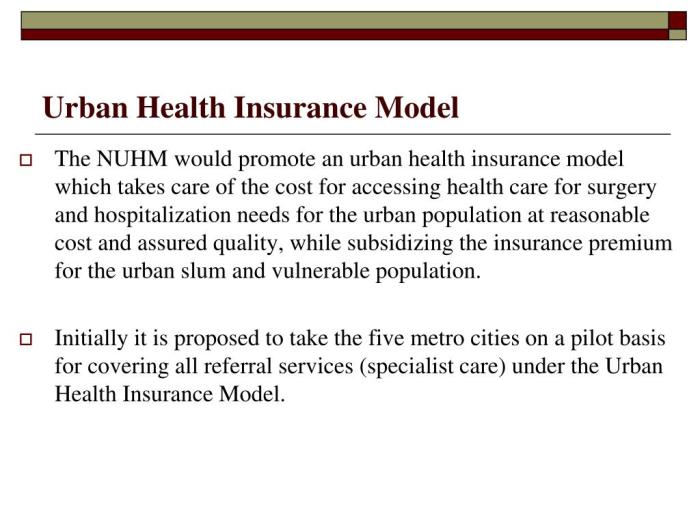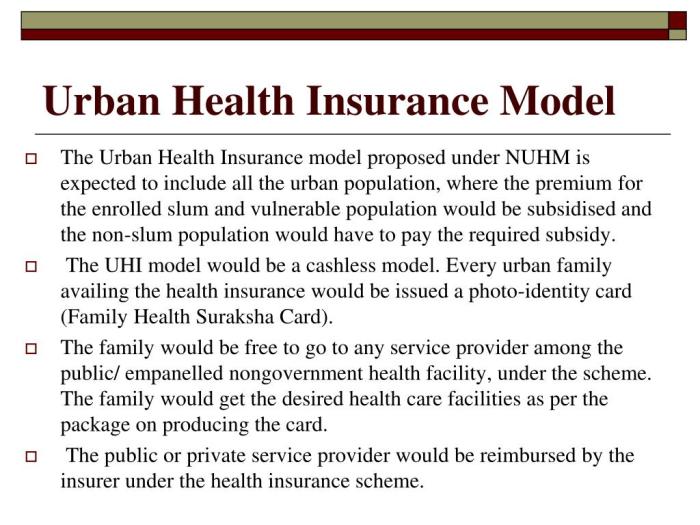In today's fast-paced urban landscape, prioritizing health-driven life insurance is crucial for urban citizens looking to safeguard their future. This guide delves into the nuances of this innovative insurance approach, shedding light on its benefits, customization options, and the integration of technology to provide a holistic view of how urban dwellers can protect themselves in an ever-changing world.
As we explore the intricacies of health-driven life insurance, a wealth of information awaits to empower you in making informed decisions about your financial security.
Importance of Health-Driven Life Insurance
Health-driven life insurance offers a unique approach compared to traditional life insurance policies by focusing on the insured individual's health and wellness. This type of insurance takes into account the policyholder's lifestyle, habits, and overall health status, allowing for a more personalized and tailored coverage.
Differences between Health-Driven and Traditional Life Insurance
- Health-driven life insurance emphasizes preventive measures and encourages policyholders to adopt healthier habits to reduce the risk of illnesses.
- Traditional life insurance primarily focuses on financial protection in the event of death, with limited consideration for the insured's health and wellness.
- Health-driven policies often include wellness programs, fitness incentives, and other benefits to promote a healthier lifestyle.
Benefits of Health-Driven Life Insurance for Urban Citizens
- Improved Health Outcomes: By incentivizing healthy behaviors, health-driven life insurance can lead to better health outcomes for urban dwellers.
- Cost Savings: Preventive measures and early interventions promoted by health-driven policies can help reduce healthcare costs in the long run.
- Customized Coverage: Health-driven life insurance offers tailored coverage based on the insured individual's health profile, ensuring a more comprehensive and suitable policy.
Key Factors Making Health-Driven Life Insurance Essential for Urban Dwellers
- Sedentary Lifestyles: Urban citizens often lead sedentary lifestyles due to long working hours and limited access to outdoor activities, making them more susceptible to health issues.
- High Stress Levels: The fast-paced urban environment can lead to increased stress levels, which have a detrimental impact on overall health and well-being.
- Dietary Challenges: Urban areas may have limited access to fresh and healthy food options, leading to poor dietary habits among residents.
Customization Options for Urban Citizens

When it comes to health-driven life insurance policies, urban citizens have a range of customization options to tailor their coverage to their specific lifestyle and health needs. These customization choices provide flexibility and personalized protection that traditional life insurance may not offer.
Wellness Programs
- Urban citizens can opt for wellness programs that encourage healthy habits such as regular exercise, balanced diet, and preventive screenings.
- These programs may offer rewards or discounts for achieving health goals, motivating individuals to prioritize their well-being.
Flexible Coverage Limits
- With health-driven life insurance, urban citizens can adjust their coverage limits based on their financial situation and anticipated healthcare expenses.
- This flexibility allows individuals to increase or decrease their coverage as needed, ensuring they are adequately protected without overpaying.
Customizable Premiums
- Urban citizens can choose from a variety of premium payment options, such as monthly, quarterly, or annual payments, to fit their budget and cash flow.
- Some policies may also offer the ability to adjust premium amounts over time, providing added financial flexibility.
Additional Riders
- Health-driven life insurance policies often offer additional riders that urban citizens can add to enhance their coverage, such as critical illness or disability riders.
- These riders provide extra protection against specific health risks or financial challenges, giving policyholders peace of mind.
Integration of Technology and Data Analytics

Technology and data analytics have revolutionized the way health-driven life insurance operates for urban citizens. These advancements have brought about significant changes in policy premiums, coverage options, and overall customer experience.
Role of Wearable Devices and Health Apps
Wearable devices and health apps have become integral tools in shaping health-driven life insurance policies for urban citizens. These devices collect real-time data on an individual's health and lifestyle, providing insurers with valuable insights into their overall well-being. By analyzing this data, insurance companies can offer personalized policies that align with the policyholder's health goals and risk factors.
This personalized approach often leads to lower premiums for individuals who actively manage their health using these technologies.
Impact on Policy Premiums and Coverage
The integration of technology and data analytics has resulted in a more transparent and fair pricing system for policy premiums. Insurers can now assess an individual's risk more accurately based on their actual health data, rather than relying solely on generalized demographic information.
This has led to the possibility of dynamic pricing, where premiums are adjusted in real-time based on the policyholder's health behaviors and outcomes. Additionally, the use of technology has expanded coverage options to include wellness programs and incentives for policyholders who engage in healthy activities.
Privacy Concerns and Ethical Considerations
While the use of personal health data in insurance policies offers many benefits, it also raises significant privacy concerns and ethical considerations. Insurers must ensure that the data collected is secure and used responsibly to avoid breaches or misuse. There is a delicate balance between leveraging data for personalized policies and respecting individuals' privacy rights.
It is essential for insurers to be transparent about how they collect, store, and utilize health data to maintain trust with their policyholders.
Wellness Programs and Incentives
Wellness programs and incentives play a crucial role in promoting a healthier lifestyle among urban citizens. These initiatives not only encourage individuals to adopt healthy habits but also provide tangible benefits that can positively impact their overall well-being.
Success Stories in Wellness Programs
- One successful initiative integrated into health-driven life insurance policies is the provision of discounted gym memberships or fitness classes for policyholders. This incentivizes individuals to engage in regular physical activity, leading to improved fitness levels and overall health.
- Another effective approach is the inclusion of rewards programs that offer discounts on healthy food purchases or wellness products. By making nutritious options more accessible and affordable, policyholders are encouraged to make healthier choices in their daily lives.
- Some insurance providers have also partnered with wellness apps and wearable devices to track policyholders' activity levels, sleep patterns, and nutritional intake. This data is then used to offer personalized recommendations and rewards based on individual health goals.
Long-Term Benefits of Wellness Programs
- Participating in wellness programs not only helps individuals improve their physical health but also has long-term benefits for policyholders. By adopting healthier habits, such as regular exercise and balanced nutrition, individuals can reduce their risk of developing chronic conditions like diabetes, heart disease, and obesity.
- Engaging in wellness programs can also lead to increased productivity and reduced absenteeism in the workplace. Employees who prioritize their health are less likely to fall ill and more likely to perform well, benefiting both themselves and their employers.
- Furthermore, by investing in preventive healthcare through wellness programs, policyholders can potentially lower their healthcare costs in the long run. By addressing health issues early on and maintaining a healthy lifestyle, individuals can avoid costly medical treatments and interventions later in life.
Wrap-Up

In closing, Health-Driven Life Insurance for Urban Citizens not only offers financial protection but also serves as a beacon of hope for a healthier, more secure future. By embracing this proactive approach to insurance, urban dwellers can embark on a journey towards holistic well-being and peace of mind.
Q&A
What sets health-driven life insurance apart from traditional life insurance?
Health-driven life insurance focuses on incorporating wellness aspects into policies, promoting a healthier lifestyle and potentially offering incentives for policyholders.
How can urban citizens customize their health-driven life insurance policies?
Urban citizens can tailor their policies by choosing wellness programs, adjusting coverage levels, and incorporating data from wearable devices to suit their lifestyle and health needs.
What role does technology play in health-driven life insurance for urban citizens?
Technology enables the integration of data analytics, wearable devices, and health apps to assess policyholders' health status, potentially influencing premiums and coverage options.
Why are wellness programs important in health-driven life insurance policies?
Wellness programs incentivize policyholders to maintain a healthier lifestyle, leading to long-term benefits in terms of improved health outcomes and potentially lower premiums.






